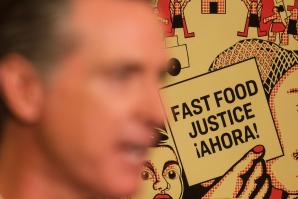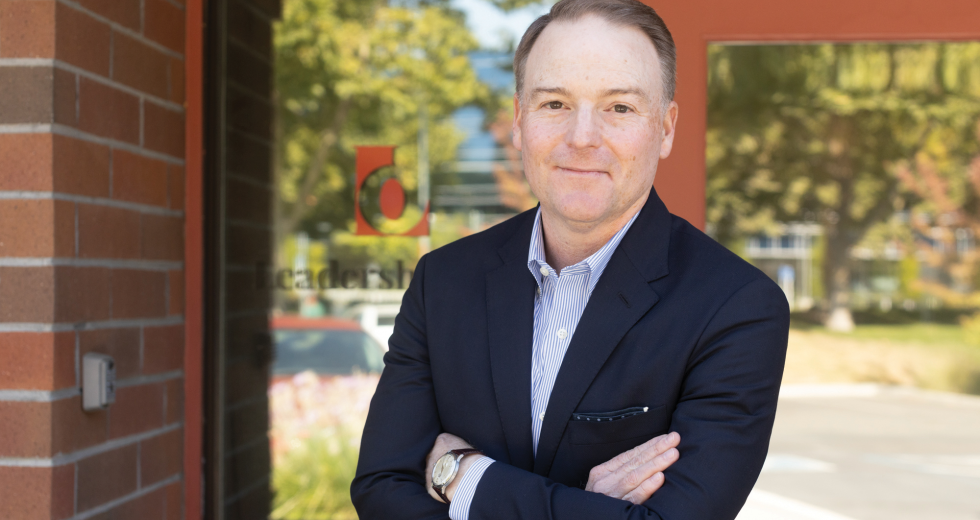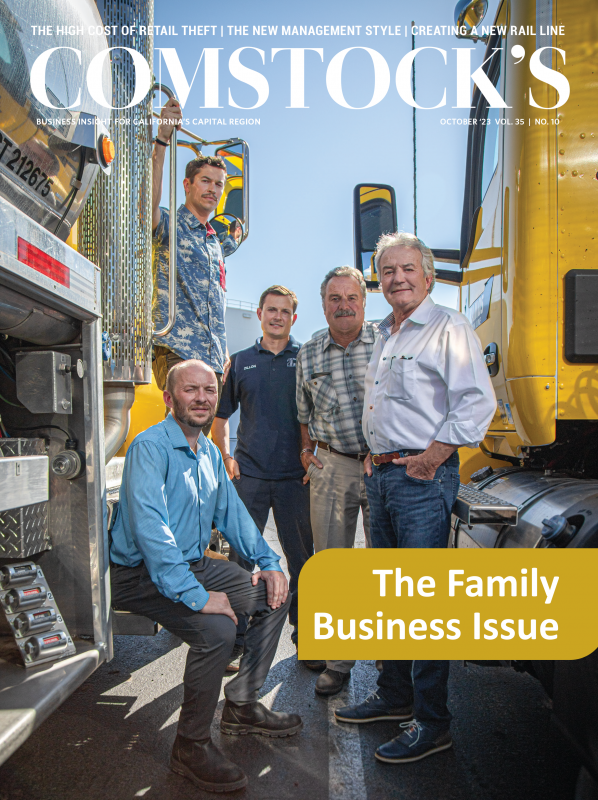Like many companies, Bender Insurance Solutions closed down the office and switched to remote work during the height of COVID-19. The employees liked it. In fact, they loved it. In 2022, the firm’s CEO, Maggie Bender-Johnson, knew she had a tricky dilemma on her hands. She wanted her people back in the office, but she was empathetic to their concerns and preferences — most wanted to stay remote.
So Bender-Johnson listened to her staff and kept the virtual model, a decision that fits into her larger “employee first” strategy. “Our people are our greatest assets,” says Bender-Johnson. “Our product is our people, their brains. Without them we’re nothing.”
She’s not operating simply out of kindness. She realized that in this tight labor market, employees have plenty of other options, and “insurance isn’t always the sexiest one.” Retention was at risk. So Bender-Johnson doubled down on the firm’s employee-friendly perks: unlimited time off, free access to financial planners, an employee stock ownership plan, and a focus on wellness with things like meditation sessions and yoga in the park. “It’s making sure that if someone’s having a tough time mentally, we’re putting resources in front of them quickly,” she says.
This is a management style that embraces flexibility, empathy and adaptability — crucial traits for modern leaders. Today’s workplace is “not like the old times, where it’s a top-down approach,” says Sargam Garg, an associate professor with a focus on organizational behavior at Sacramento State. The landscape has changed. The pandemic, the rise of Gen Z and new cultural norms have all contributed to a shift in the values we expect from modern leaders. Understanding these trends — and the strategies required to keep up — is crucial for any leader who wants to retain employees, inspire their best work and even continue their own career. As Garg puts it, “If you’re not a good manager, you won’t have a job.”
Managing differently
In the 1990s, Chris Glassman started his career in investment banking. His boss had a hard-nose approach of “sink or swim.” Some swam, but many more sunk. Glassman and his coworkers joked that in their cutthroat environment, they had a “100 percent turnover rate” because either “you move up or you move out.” Glassman, who is now a principal at Sacramento-based LeadershipOne, says the workplace has gradually moved away from this tough-love mindset, and COVID-19 accelerated the trend.
“We have to be flexible in understanding what the pandemic has done to people, and there’s such a wide response,” says Bonnie Ferreira, CEO of the Mountain Valley chapter of the American Leadership Forum. No one should assume that their own response to COVID is “normal.” Some people are still nervous about the pandemic (especially with a recent rise in cases), some still suffer from long COVID, and some are still grieving from lost family members.
Meanwhile, as the pandemic spread anxiety throughout corporate America, Gen Z entered the workforce. “The way they want to work and the way they want to be managed is different,” says Garg. For starters, they’re less enthusiastic about just “doing what they’re told” and working in a vacuum. They want to know why their work matters. Glassman says they’re more likely to ask their manager, “How meaningful is the work I’m doing?” or “What impact is my work having on the department?” Or as Ferreira has found, “Gen Z just wants to be included in the decisions.”
Younger workers embrace career fluidity. Gen Z doesn’t like to be defined by labels, says Garg. “That’s the crux of the new workplace. They’re open to different routes, and they want to experiment.” For example, maybe a financial analyst who spends her days crushing Excel spreadsheets is also, on the side, curious about marketing. Garg suspects that COVID helped fuel this career wanderlust, as many of us had the freedom to dabble in side hustles (like starting an e-commerce shop) or learn a new skill (like coding or graphic design).
Sargam Garg is an associate professor of management at Sac State.
She says today’s workers want to know that their work matters.

And unlike the old days, there’s a very real threat that employees will leave to pursue those other interests. With an unemployment rate still near historic lows at 3.8 percent, the labor market remains tight. “Employers have been hungry for help,” says Glassman. “They’ve had to allow for four-day work weeks, or unlimited time off, or remote work.” Thanks to this imbalance of supply and demand, Glassman says that employees are “not as committed to their employers” as in years past. Glassman suspects this dynamic is exacerbated by the fact that according to a 2020 study from Zillow, roughly one-third of Gen Z, which are ages 18-24, still lives with their parents. “That’s got to have an impact on how they view their work,” says Glassman. “They don’t have the economic pressure of keeping a job.”
Then there’s the complicated issue of employees’ mental health. In 2021, tennis star Naomi Osaka withdrew from the French Open, publicly stating that she “suffered long bouts of depression” and that she needed a break. This helped spark a larger conversation about removing stigmas from mental health. Years ago, if an employee was exhausted or burnt out, they’d either grit their teeth and trudge into the office — likely to both their and the company’s detriment — or tell a white lie about feeling sick. “They wouldn’t say they needed a mental health day,” says Glassman. “Now there’s no negative connotation to it anymore.”
All of these shifting dynamics, cumulatively, amplify the need for empathy and flexibility. These are qualities embraced by Stephen Perez, president of Chico State and former provost of Sacramento State. “We all had to be flexible through the continuing COVID crisis,” says Perez. “Every university was able to turn itself into a fully online university, and Sac State did it in three days.” The sudden pivot meant rethinking every aspect of how the school operated and giving grace to the faculty and staff who were making the impossible possible. “We had a lot of staff and faculty with children learning from home,” says Perez. “We tried to be understanding of that. We tried to be as flexible as we could.”
Perez puts a premium on empathy, and he has a different definition than most. Empathy, to Perez, isn’t just taking a walk in somebody else’s shoes. “Empathy is hearing somebody’s experience,” he says, “and believing it’s true because they told you it’s true.” So if an employee shares they have challenges in their personal life, Perez doesn’t need to press for details to be persuaded; he’ll take them at their word.
Glassman says that in the past few years, the idea of empathy has gained prominence in the world of thought leadership. He points to the book “The Heart of Business” by Best Buy’s former CEO Hubert Joly as an example. “The empathetic leadership model has grown within the management circles,” says Glassman. “And people who are new to the workforce, such as Gen Z, are expecting that as well.”
Ferreira calls this style of empathetic management “adaptive” leadership. “It comes from a scientific premise, that you have to change and mutate fluidly through systems and structures,” says Ferreira. “To manage the change that you want to see, you have to be adaptable.”
So what are the specific, concrete strategies for leaders to be more adaptive and to show more empathy? Garg says that much of it boils down to one simple word: Listen. “It’s about spending more time with the employees, whether in person or virtually,” says Garg. “We don’t talk enough about listening.”
Glassman agrees and stresses how crucial it is to listen and chat with employees on the regular. He’s almost amused by managers who mistakenly think if there’s nothing wrong, then there’s nothing to talk about. When you follow this idea to its logical conclusion, that means the only time the manager talks to an employee is when something goes sideways. “Then people get scared when a manager calls a meeting. They think it’s bad news,” says Glassman, which is why he stresses that communication should be “regular and often.” He encourages leaders to connect on a personal level, to ask how they’re doing, how they’re feeling, or even what books they’re reading.
Perez has done this for years. When he was the provost at Sacramento State, it only took 10 minutes to walk across campus. But instead he would allot 30 minutes for the walk, hoping he’d bump into people along the way. “People are less formal, and you can have real conversations when you hit them on the sidewalk,” says Perez. He’s now using the same playbook at Chico State, walking across the campus multiple times a day. “On many days I’m a cheerleader, frankly,” says Perez. “At the root that’s my job.”
Another concrete strategy for adaptive leadership: Show employees why their task matters. Gen Z, after all, wants to know how their work folds into the grander mission of the company. (To be fair, this is likely true of most generations.) Ferreira calls this “personalizing the goals.” For example, let’s say an analyst churns out graph after graph and cranks out report after report. Maybe that work can feel tedious. Bloodless. Mindless drudgery like the infamous “TPS reports” from “Office Space.” The challenge for the manager, says Ferreira, is to connect these tasks to both the employee and the company’s mission. Personalize. So you could tell the analyst something like, “By analyzing this data, we’re better able to do business planning in the future. If we don’t have this data, we can’t do that. Every ounce of information you’re pulling is so important to the company.”
This kind of feedback should happen constantly, says Ferreira, and not just once a year at performance evaluations. Glassman wholeheartedly agrees, adding that a sneaky benefit of constant feedback is that employees feel noticed. “They want attention,” says Glassman. “They don’t necessarily want to hear what they did wrong, they just want attention. Employees want to know that managers care about them.”
But is all this too gooey and warm and fuzzy? Especially to seasoned veterans in the workforce, perhaps these concepts — empathy, a focus on mental health — can seem like empty platitudes or a fashionable trend that will age poorly. But the stakes are real. Even if you are a robot with cold indifference to the emotions of your human employees, the impact to the business is undeniable. Retention matters. Turnover eats into profits. “We want happy employees, and hiring employees is difficult,” says Ferreira. “All of this is just incredibly important to the bottom line.”
Maggie Bender-Johnson found the same thing. Ninety-five percent of Bender Insurance’s employees are still working remotely. She acknowledges this might change in the future and admits that “we haven’t gotten it figured out,” but she also notes that the firm is growing. The employee-first approach is working. Bender Insurance has been in business since before World War II, and Bender-Johnson says, “This is our most profitable year yet.”
Stay up to date on business in the Capital Region: Subscribe to the Comstock’s newsletter today.
Recommended For You

The Wage of Innocence?
Comstock’s president and publisher reflects on minimum wage and the value of work.

Running a Family Business in California Isn’t Easy
But local organizations are here to help
The line from “The Godfather,” “It’s not personal, it’s strictly business,” does not apply to the members of a family business. For us, there are a wide range of emotions that start at an early age as we realize that we are part of something that consumes our parents’ time, including conversations at dinner and the holidays.

A Piece of the Pie
Family business spotlight: The Fruit Bowl has been providing peaches and more to Stockton for 76 years
Over the course of summer and the first weeks of fall, over 60 varieties of peaches and nectarines pass through The Fruit Bowl, a 76-year-old produce stand on the rural outskirts of Stockton.

A Fire in the Sky
Family business spotlight: From Macy’s Fourth of July to the Space Needle, Pyro Spectaculars produces more than 400 fireworks shows a year
The show producer opens his laptop, and with a touch of the keyboard the magic begins. Music swells, and a spectacular vision of multicolor sparkling flowers explodes in the night sky, along with golden starbursts and shiny cascading waterfalls.




